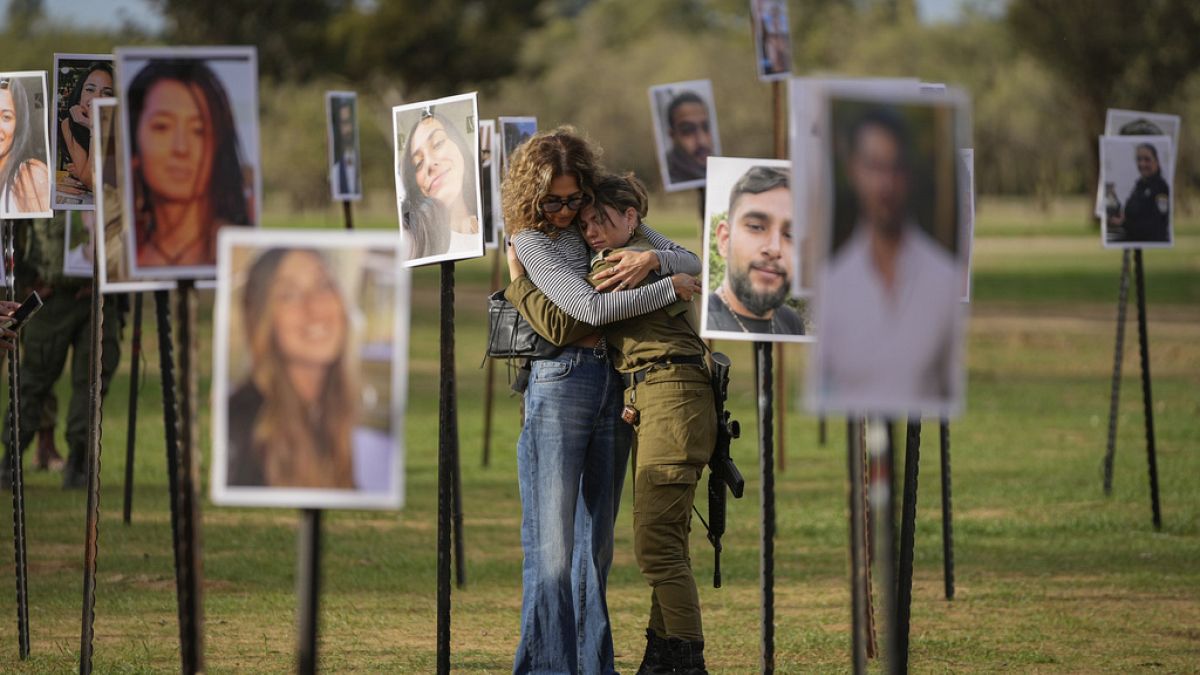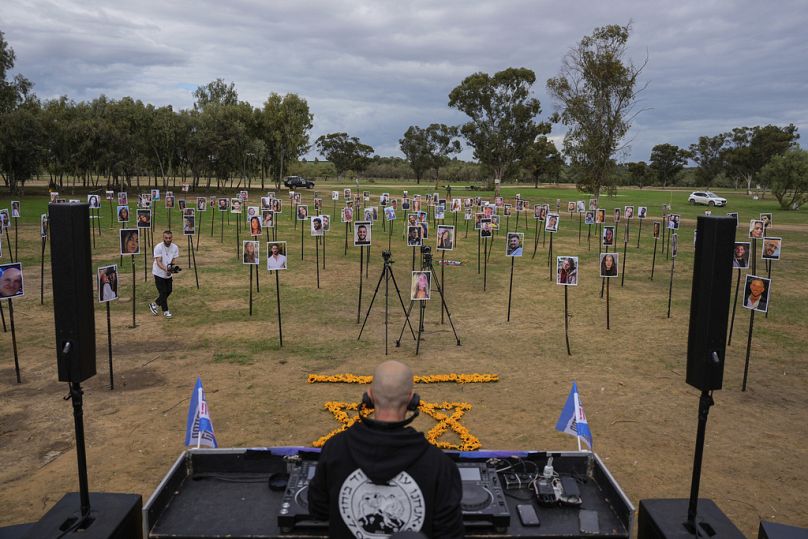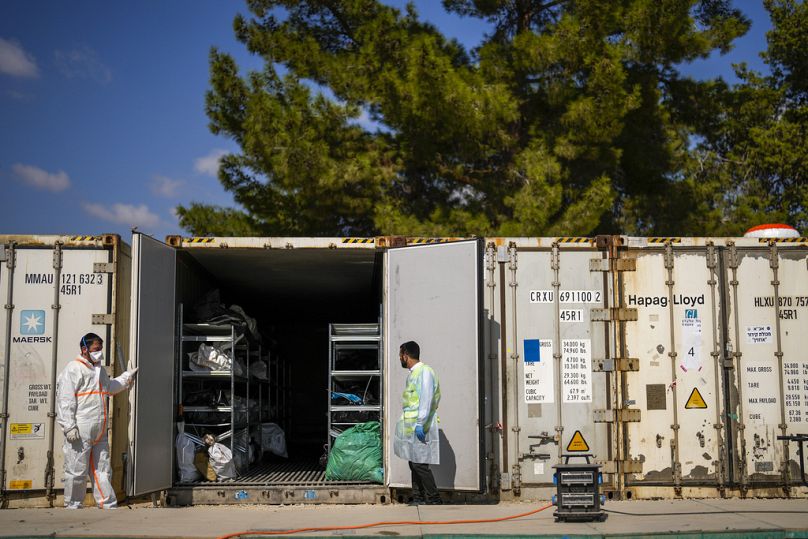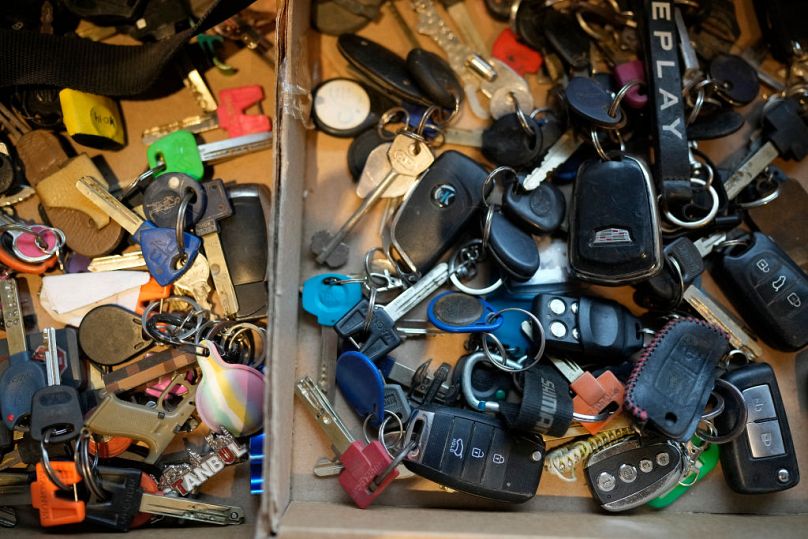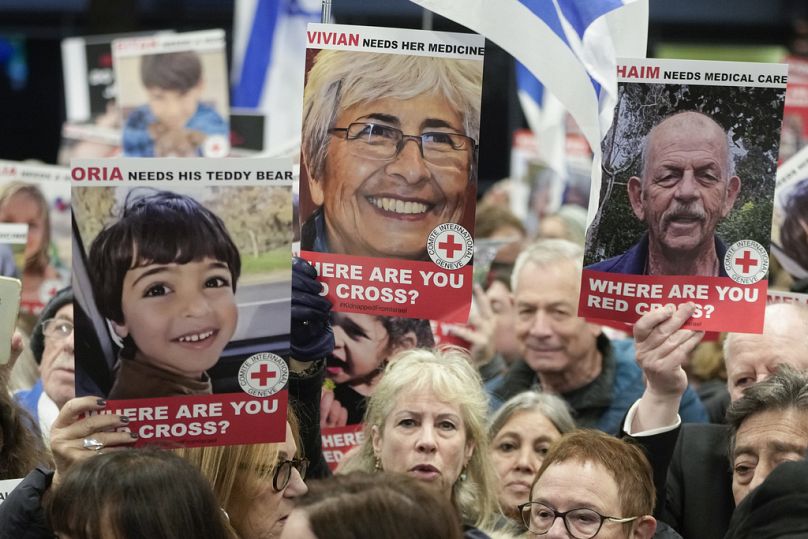Nearly two months into the conflict, many Israelis have no idea if their relatives taken as hostages or lost in the chaos of 7 October are dead or alive.
On 7 October, when Hamas militants rampaged through a music festival in southern Israel, Hanan Yablonka and four friends tried to flee the carnage.
The friends were killed - but what became of Yablonka is still a mystery.
The 42-year-old Israeli's phone was found in the bullet-riddled car he and his companions used in their escape attempt - but there has been no sign of him since. No social media updates or replies to messages.
Like so many Israeli families, Yablonka's family still has no news about what happened to him. He is one of dozens of people still unaccounted for in the aftermath of Hamas infiltrating Israel, killing some 1,200 people and taking about 240 hostages - a number who have since been released - both at the Tribe of Nova Trance music festival and beyond.
Some of the bodies of those who died were so badly burned in fires or explosions during the attacks that there’s little left to identify. Others who might still be alive haven’t been traced, forcing families to live in a seemingly never ending limbo.
“It’s a big nightmare," Yablonka's niece, Emanuel Abady, told The Associated Press.
"Is he alive, is he dead, or where is the body? Maybe he’s in Gaza… Maybe he got hurt, maybe he got shot, but he’s in Gaza."
In the immediate aftermath of the attack, police, the military and investigators grappled with a mass casualty crime scene, trying desperately to identify the dead and the abducted.
Getting clear answers for people's whereabouts and the number of dead was, and still remains, challenging.
In November, the military adjusted the number of people killed from more than 1,400 down to approximately 1,200 - but didn’t specify why.
It has also repeatedly updated the number of hostages believed to have been taken into Gaza.
Israeli officials told The Associated Press that dozens of people's fates were still unknown, but wouldn't respond to multiple requests for comment about why it’s taken so long to identify them and why the number of dead was adjusted.
The military - also known as the IDF - has announced it enlisted the help of archaeologists to apply excavation techniques used in burned and damaged ancient sites to help identify victims. The experts have so far helped to identify at least 10 people.
Some people initially thought to have been taken hostage have, sadly, been proclaimed dead.
That group includes Vivian Silver, a Canadian-born Israeli peace activist whose family has only recently been notified that she’d been killed.
On the other side of the coin, though, others thought to have been killed were found to have been abducted.
Nine-year-old Emily Tony Korenberg Hand was one of that number, released last Saturday.
The bodies of victims alongside other human remains have been taken to the Shura military base in central Israel, now converted into a morgue for the identification of victims.
At the start, it was easier to identify bodies that were more intact, forensic specialists explained. Now, the final stretch has become painstaking with the need to sift through charred bones which makes it significantly harder to extract and match DNA.
Other means of identification, such as fingerprints or dental records, often cannot be used.
“It is a long process, sometimes we don’t have the right bone or the right sample in order to give the answer… When you have difficult samples it takes time,” Gila Kahila Bar-Gal explains.
She’s an expert in wildlife forensic and ancient DNA research who has been volunteering at the National Institute of Forensic Medicine to help identify victims. It can take up to twice as long to identify burned bones, she says.
It’s also been challenging to determine how many people were abducted in the chaos that ensued when Hamas entered Israel from Gaza.
“Many people ended up storming through the barrier that day: civilians, militants and Hamas, and it’s still pretty unclear the scale of who was taken and who’s holding everyone,” Mairav Zonszein, a senior analyst on Israel for the International Crisis Group tells the AP.
Yablonka's niece believes her uncle is still alive and was likely abducted. Through video, text messages and phone calls the family has been able to piece together the last few hours before he disappeared.
Yablonka was among the thousands who attended the Nova music festival near the border with Gaza. A father of two, he loved music, Abady says.
His family were not aware, though, that he'd gone to the festival - and it was only when they hadn't heard from him late on 7 October that they started to worry, making calls, combing through social media and contacting the police.
When the sirens warning of Hamas rockets went off that morning, surveillance video received by the family and seen by the AP shows a man the family says is Yablonka in a packed festival car park, at one point crouching behind a car.
Just before 7 a.m. local time, one of his friends called Israel's emergency service from the car, saying someone had been shot. Text messages sent by two women with the group to their families said Yablonka was driving and they were trying to escape.
Another video shown to the family revealed the damaged car with its back window blown out and shattered glass, a backpack and clothes strewn on the seat.
The car was found near Mefalsim Kibbutz, a few kilometres from the festival site, with the bodies of Yablonka's three friends nearby, Abady says.
Despite all of those signs, there was no trace of Yablonka, including any blood splatter. His keys, phone and identification documents were inside the car but no more evidence which might help his family locate him.
They have provided DNA samples, along with his dental records and medical information in hopes he will be found and identified.
The stress and anxiety of not knowing what happened to a loved one takes a huge psychological and emotional toll, says Sarah Davies, a spokesperson for the International Committee of the Red Cross.
“They are living with a gaping hole in their lives. Countless scenarios run through the mind of family members… imagining the worst and being unable to do anything about it,” she explains.
For some families, it’s simply too painful to wait for answers.
In early November, the family of 12-year-old Liel Hetzroni put some of her clothes, personal belongings and ashes from where they thought she'd died, inside a coffin and buried it alongside her twin brother and aunt.
The three were trapped in a house with dozens of others in Kibbutz Be’eri during an hours-long standoff between Hamas and Israeli soldiers that ended in an explosion, killing nearly everyone inside.
While the remains of Liel's brother and aunt were quickly identified, there was no trace of Liel for weeks, Sagi Shifroni, Liel’s cousin, explains.
“The waiting (wasn't) healthy for the soul or for our family,” Shifroni says. Shortly after they buried the coffin, the army informed them that one of her bones had been found.
“It feels good to get approval for what we knew already," he says, “It's closure."
